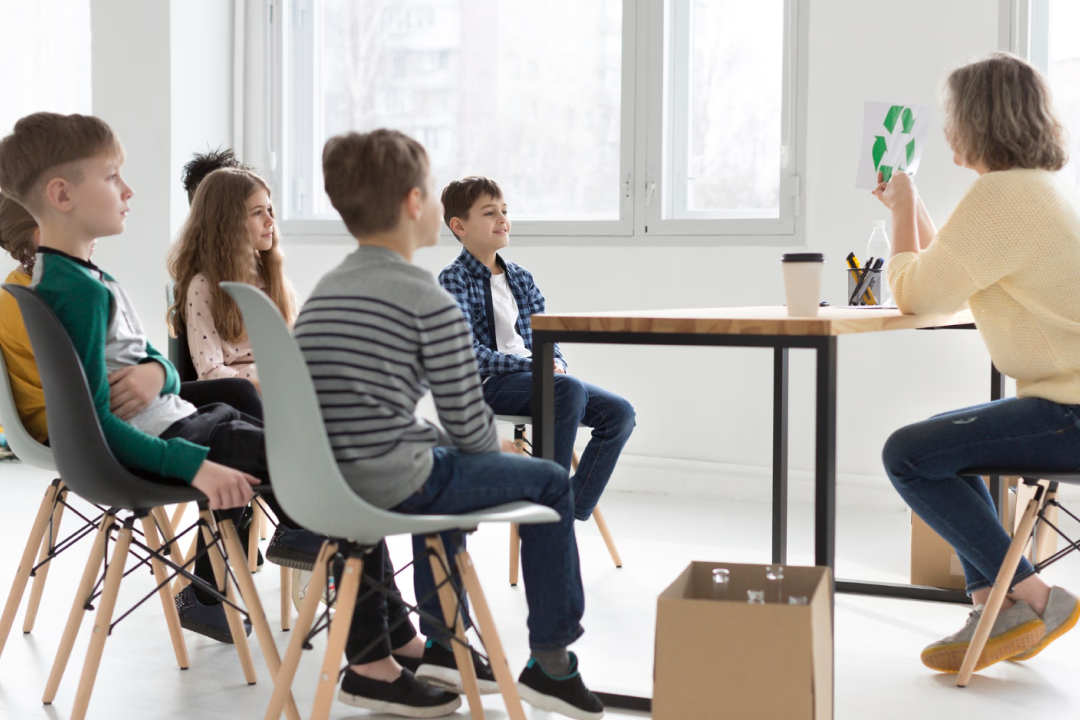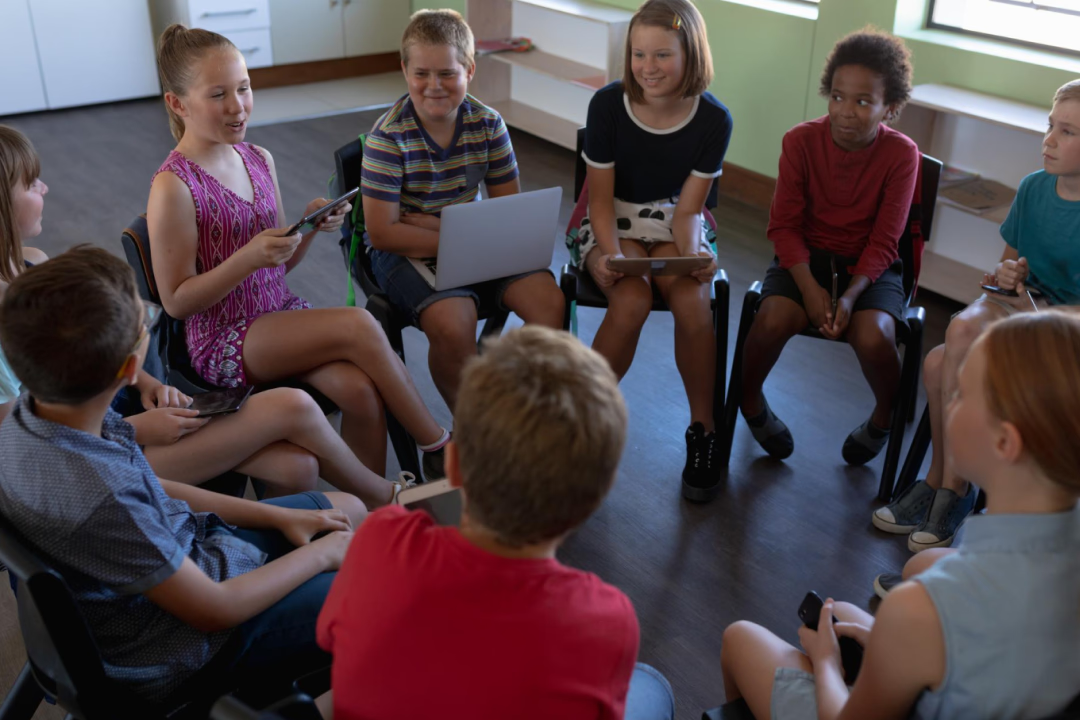Miss Leena stood before her peer group, palms slightly sweaty, ready to begin. She’d rehearsed her lesson multiple times, but as soon as she started with a dry lecture-style introduction, she noticed the energy in the room dip. That’s when it hit her: teaching isn’t just about delivery, it’s about engagement. What if she had started with an interactive activity instead? Would the room have come alive?
Moments like this show how even a well-prepared lesson can fall flat without the right approach to engage learners. But that doesn’t mean they have to be dull. This is the perfect space to experiment with the activity-based learning method. This hands-on, learner-centered approach can turn the simplest topics into memorable experiences.
One of the most effective ways to create an engaging, learner-centered classroom is by using well-structured activity plans. Activities that are intentionally designed to meet learning objectives not only boost participation but also deepen understanding. Whether you’re incorporating collaborative tasks, hands-on experiences, or reflective discussions, structured planning ensures every activity serves a clear instructional purpose.
Now, let’s explore 10 engaging ideas that showcase the importance of activity-based learning and how to implement it effortlessly.
Think-Pair-Share is one of the simplest ways to implement activity-based learning in the classroom. It turns passive listening into active engagement by guiding students through a quick cycle of thinking, discussing, and sharing—all within minutes.
Classroom Usage:
Use this method to spark curiosity at the start of a lesson or check understanding midway. It works best with open-ended questions and needs no materials. Allocate 30 seconds to think, 1–2 minutes to pair up, and a few moments to share. It's short, interactive, and clearly learner-centered.
Example:
In a Grade 7 lesson on environmental conservation, the teacher asked, “Which daily habit do you think harms the planet the most?” Students paused to reflect, then paired up to exchange ideas. From single-use plastic to wasting electricity, the variety of responses brought multiple perspectives into the discussion, making it a strong activity-based learning example.
Role-playing is one of the most impactful activity-based learning strategies because it helps students imagine themselves in someone else’s shoes. It builds empathy, communication skills, and subject understanding through experience, not explanation.
Classroom Usage:
Role-playing is effective for topics involving people, perspectives, or processes. It shows the importance of activity-based learning by helping students internalize concepts through action. Set clear roles, time limits, and outcomes. Role-playing works well in social studies, languages, or even science (e.g., cell organelles as characters). It grabs attention quickly and effectively demonstrates how to manage class interaction.
Example:
In a Grade 5 lesson on conflict resolution, the teacher assigned roles: one student was a mediator, two played classmates in a disagreement. The rest observed body language, tone, and solutions as they acted out. It felt real, and that’s what made it stick. Learners remembered the process, not just the definition.
Gallery Walk turns your classroom into an interactive exhibit. Learners move around, observe, discuss, and reflect on visual content. It’s a potent activity-based learning method that brings movement, curiosity, and peer interaction into even the shortest sessions.
Classroom Usage:
Use Gallery Walk when your topic includes categories, comparisons, or visuals. Prepare charts or slides with guiding questions. Divide students into groups and rotate them every 1–2 minutes. You can scale it down with just three stations or even table-based rotations. It shows how learning can be active, even in a time-limited format.
Example:
In a lesson on types of energy, the teacher placed five posters around the room, each with an energy type, a diagram, and a thought-provoking question. Learners rotated in pairs, reading and noting key points. This transformed a static topic into an exploratory experience—one of the most effective activity-based learning examples seen during the session.
Card Sorting is a quick and tactile way to check understanding or introduce new ideas. It involves categorising, comparing, or sequencing information, making it one of the most versatile activity-based learning strategies.
Classroom Usage:
Use a Card Sort when teaching classifications, timelines, or processes. It reinforces the importance of activity-based learning by letting students work hands-on, think critically, and justify their choices. To keep it focused, limit the categories to two or three and use printed cards, paper slips, or even sticky notes. It’s a great way to make content active—no slides or board required.
Example:
In a Grade 4 science class, the teacher handed out cards with names and images of objects. Learners sorted them into “Living” and “Non-living” categories. As students placed each card, they had to explain their reasoning. It was simple, visual, and sparked conversation.
Peer Teaching changes the classroom dynamic by letting students take on the role of the teacher. This strategy deepens understanding through explanation and builds confidence. It’s a powerful way to bring activity-based learning into your classroom.
Classroom Usage:
Use Peer Teaching to break down subtopics. Give each group a prompt or concept, allow a few minutes for preparation, and have them present to the class. This approach works well for grammar rules, math strategies, science concepts, or historical events. It encourages collaboration, critical thinking, and ownership of learning even with minimal resources.
Example:
In a lesson on sentence types, the teacher divided the class into small groups and assigned each a sentence type: declarative, interrogative, exclamatory, or imperative. Each group created examples and explained their sentence type to the class. What could have been a dry grammar topic became a lively, student-led experience.
This playful twist on a classic game helps learners apply content knowledge quickly. It challenges them to recall facts, question assumptions, and justify their reasoning, making it an engaging activity-based learning method for review or introduction.
Classroom Usage:
Use this activity to test misconceptions or reinforce key facts. Prepare your three statements in advance, present them, and ask students to vote or debate. It is a quick and effective way to combine fun with meaningful content. No slides or handouts are needed, just good questions and active participation.
Example:
In a lesson on nutrition, a teacher shared these three statements:
- Carrots improve night vision.
- Protein helps build muscle.
- Water contains calories.
Students discussed in pairs and chose the lie (Answer: Water contains calories). This simple prompt led to a deeper conversation about nutrients and common myths. It served as an excellent example of activity-based learning in the classroom.
Hot Seat adds energy and quick thinking to your lesson. One learner takes the “hot seat” and answers rapid-fire questions from peers. It encourages recall, boosts confidence, and builds engagement, making it one of the most interactive activity-based learning strategies.
Classroom Usage:
Use Hot Seat for roles (like historical figures), concepts (like math operations), or objects (like body parts). Guide the class to ask short, clear questions. It’s a simple way to promote active participation and on-the-spot thinking, using just a chair and a creative prompt.
Example:
During a Grade 6 science lesson on the water cycle, the teacher asked a volunteer to play the role of a “water droplet.” The class asked questions like “Where do you go after evaporation?” and “How do you turn into rain?” This turned a basic concept into a fun, fast-paced learning moment that made the content stick.
Concept Mapping is a visual, activity-based learning method that helps learners connect ideas, see relationships, and organise knowledge. It turns scattered information into a structured overview, especially useful for subjects with layered concepts.
Classroom Usage:
Use Concept Mapping either to reinforce learning after a lesson or to assess prior knowledge before it begins. You can provide key terms or let students brainstorm their own. This quiet but powerful activity reveals depth of learning without needing digital tools or visuals, just a whiteboard or sheet of paper.
Example:
In a lesson on ecosystems, the teacher asked students to map terms like “producers,” “consumers,” “decomposers,” “food chain,” and “habitat.” As learners drew arrows and grouped concepts, they demonstrated how well they understood the connections. It wasn’t just about recall, it encouraged reasoning and deeper thinking.
Mini Debates are short, structured arguments between small groups or pairs. They develop reasoning, communication, and listening skills, making them one of the most dynamic activity-based learning strategies for critical thinking and engagement.
Classroom Usage:
Use Mini Debates to explore contrasting viewpoints or analyze pros and cons. Set a timer, assign sides, and allow some preparation time. Keep each segment under 2 minutes per side. This activity promotes interaction, content retention, and confidence-building, all within a short time frame.
Example:
In a Grade 8 lesson on renewable energy, the teacher split the class into two teams: one supporting solar power and the other wind energy. Each side had one minute to present and 30 seconds for rebuttal. Learners came alive, confidently presenting facts and counterpoints. Students weren't just absorbing information but actively defending and applying it.
Mystery Bag is a tactile, curiosity-driven activity-based learning method that connects abstract topics to real-world objects. It sparks critical thinking, storytelling, and creativity. This activity works well as a warm-up or quick review.
Classroom Usage:
Use Mystery Bag to prompt metaphors, interpretations, or creative connections. It is ideal for language, values education, or life skills topics. All you need is a bag and a few items. No technology or slides are required. This low-prep, high-impact activity shows how imagination and interaction can make learning more engaging, even in short sessions.
Example:
In a lesson on character traits, the teacher passed around a small cloth bag with five everyday items: a mirror, a key, a crumpled paper, a stone, and a feather. Each learner picked one and had to link it to a character from a story. “The mirror reminds me of the prince who was too self-obsessed,” one student said. It became a standout moment that encouraged creative thinking and meaningful discussion.
Activity-based learning transforms the classroom into an engaging, learner-centered environment. By incorporating strategies like Think-Pair-Share, Role Play, and Concept Mapping, you can foster deeper understanding and active student participation. These activities demonstrate how dynamic, interactive approaches can make learning more meaningful and engaging for all students.
Looking to continue your growth as an educator? Check out PgCTL (Professional Graduate Certificate in Teaching & Learning), a program designed to help you advance your teaching skills and build on your strengths. It’s the perfect next step for anyone committed to improving their teaching strategies.
Start incorporating these activity-based learning methods into your lessons and see the difference they make in your teaching journey!











.avif)




